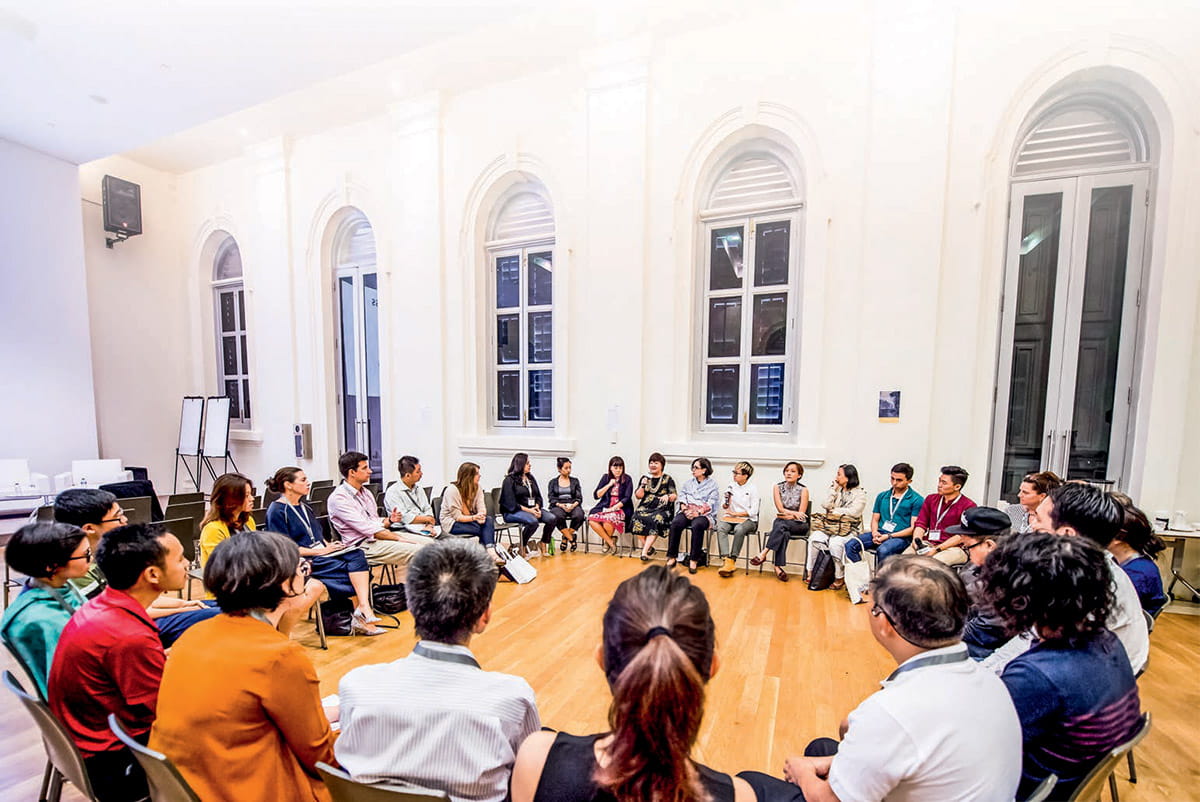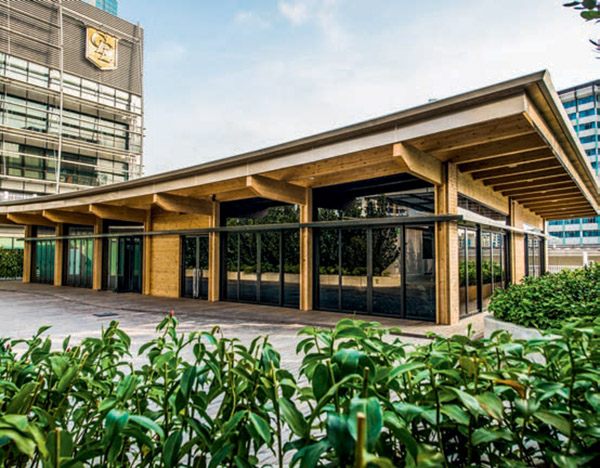Stories > Cultured Cities
Cultured Cities

Singapore Insights participants, comprising creative practitioners, artists and thought leaders, contributing ideas and refl ections during a sharing session.
PHOTOS SINGAPORE INTERNATIONAL FOUNDATION, CITY DEVELOPMENTS LIMITED & VMW GROUP
ore than 50 per cent of the world’s population live in urban areas, according to the United Nations (UN). But the number is expected to hit 70 per cent by 2050. Urban development brings with it multi-faceted challenges that require cooperation from multiple stakeholders to resolve
How can culture play a role in driving sustainable development? According to Dr Chong Keng Hua, Assistant Professor at the Singapore University of Technology and Design, this goes beyond traditional notions of arts and crafts.
“It builds on the social and cultural capital of people living in a dense urban environment to create a shared value and common goal,’’ says Dr Chong, who is also a founding partner of design consultancy COLOURS: Collectively Ours.
He adds that culture can also be an avenue for resolving various urban development challenges, and stresses the importance of both top-down and bottom-up approaches that build on traditions, values, local context, as well as tolerance and mutual respect.
“The role of culture goes beyond traditional notions of arts and crafts. It builds on the social and cultural capital of people living in a dense urban environment to create a shared value and common goal”
Dr Chong Keng Hua, a founding partner of design consultancy COLOURS: Collectively Ours and Assistant Professor at the Singapore University of Technology and Design
The UN has recognised the role of culture in the implementation of its Sustainable Development Goals, which is a set of 17 universal goals that aims to transform the world.
To explore the role of culture in realising sustainable urban development, and its potential in bringing people together to find solutions for sustainable urban living, the Singapore International Foundation (SIF) collaborated with ArtsWok Collaborative, an arts-based community development organisation, to organise a half-day session on March 1 this year.
It brought together creative practitioners, artists and thought leaders from the public and private sectors to share insights on the topic. It is part of the SIF’s Singapore Insights, a series of conversations that bring Singapore and the international community together to spark ideas for positive change.
Themed Without Culture, There Is No Future For Cities, the session featured a multi-sectorial panel who discussed the role of culture in community development and ideas for creating thriving and sustainable cities.
Panellists comprised Dr Chong as well as Esther An, chief sustainability officer of real estate company City Developments Limited (CDL); Cheng Hsing Yao, group managing director of property company GuocoLand Singapore; Chua Ai Liang, senior director of engagement and participation at the National Arts Council; and Dr Hoe Su Fern, Assistant Professor of Arts and Culture Management at the Singapore Management University.
Sharing ideas on how culture can play a part in community building, Chua cited the example of the National Arts Council’s Arts For All initiative, which supports arts activities that enhance community bonding and energise community spaces. It works with artists, corporations and community partners to create opportunities for everyone to participate.
Cheng shared how public spaces, such as those in Marina Bay, an area near Singapore’s Central Business District, were specifically created for community use and are based on sustainable development strategies.
A DIVERSITY OF VIEWS
Panellists also pointed to the importance of involving different stakeholders in promoting sustainable urban living. Said Dr Chong: “Without diversity, we are only able to see a narrow point of view, and there can be no discourse without multiple perspectives.”
He shared how COLOURS introduced the concept of community participatory design, in which end users are involved in the process of designing a space, by working with seniors to come up with SilverCove, an integrated senior wellness facility located in the Singapore suburb of Marsiling. For instance, COLOURS incorporated a vertical garden into the design of SilverCove’s outer wall after an elderly person expressed a desire for greenery in the space. The concept of community participatory design originated from Scandinavian countries, and later spread to Britain and the United States.

Singapore Insights participants, comprising creative practitioners, artists and thought leaders, contributing ideas and reflections during a sharing session.
An shared how private organisations like CDL can also help to promote community engagement to achieve sustainable development. She pointed out that even though cities occupy just 3 per cent of the earth’s land surface, they account for up to 80 per cent of the world’s energy consumption and 75 per cent of its carbon emissions.
She said: “There is an urgent need for immediate actions to mitigate climate change. However, no single person, organisation or country can deal with this alone. Indeed, the key challenge is for everyone to recognise that they can and must do their part to save the earth. There is no time to lose and we must act fast.”
She said that CDL has long recognised the need to integrate sustainability into its business and operations, and to bring its stakeholders on board. For instance, the organisation has launched a sustainability blueprint called CDL Future Value 2030, where it commits to raising its carbon emission reduction targets from 25 per cent to 38 per cent by 2030 from 2007 levels, and reducing its total waste disposal by 50 per cent from 2016 levels, among other targets.
In June this year, CDL collaborated with the Sustainable Energy Association of Singapore, a non-profit business association that aims to help its members achieve sustainable growth locally and regionally, to launch the Singapore Sustainability Academy (SSA). The SSA, supported by government agencies, is a ground-up initiative that aims to promote a low-carbon economy, resource efficiency, and sustainable practices among businesses and the community, especially youths.
These efforts, said Dr Chong and An, demonstrated Singapore’s commitment to sustainable development, but they also encourage the country to continue learning and adopting best practices and innovative technology from other countries.
